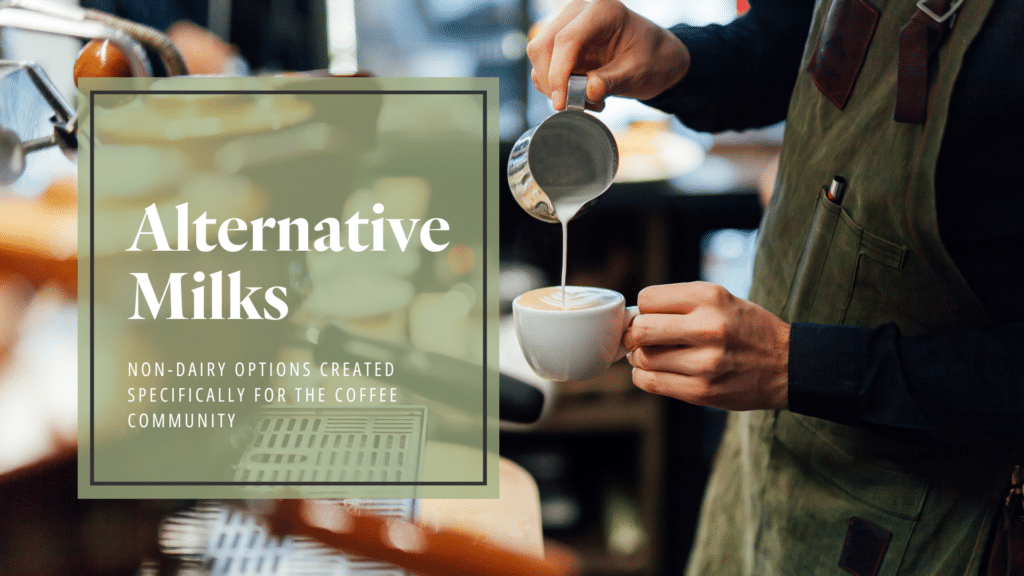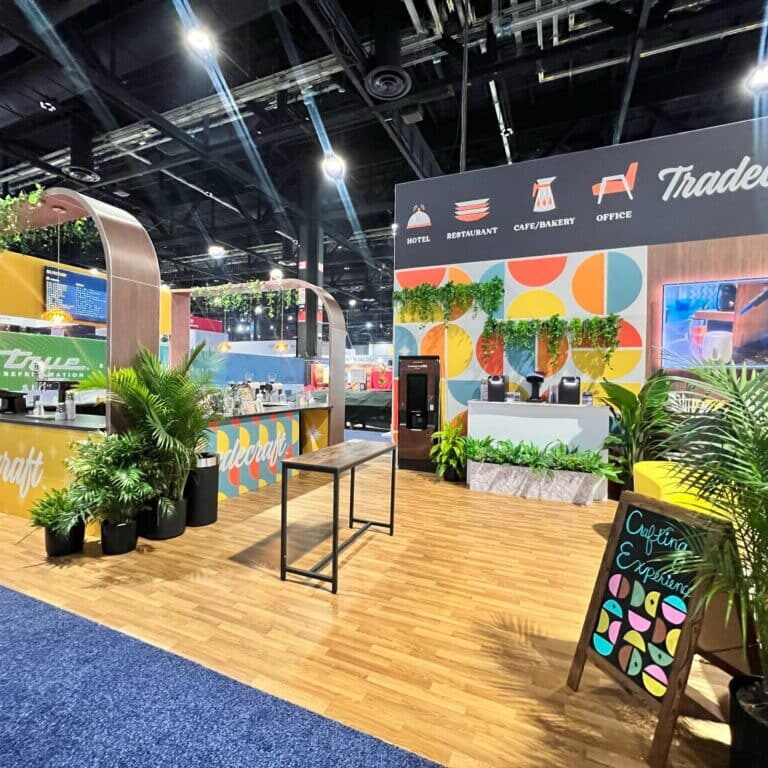
Whether it’s a cup of coffee with a splash of cream or a more milk forward latte-style beverage, milk can help curb the acidity and bitterness associated with coffee. Today, more people than ever are seeking plant-based alternatives. There are many reasons why someone might prefer an alternative to dairy – health reasons, global and climate considerations, personal preference, etc. To meet the increased demand, manufacturers have stepped up to provide alternatives that not only taste great but are created specifically for the coffee community.
Common milk alternatives: soy, almond, coconut, oat, rice, hemp, macadamia, and cashew.
From a barista’s perspective, dairy milk with a little fat in it works best to produce a steamed texture called microfoam – a latticework of tiny bubbles that have been forced into the beverage during frothing using an espresso machine’s steam wand. Microfoam is the creamy, glossy foam texture that is great for pouring latte art.
The simplified explanation of how plant-based milks are made is:
- Seeds or nuts are soaked in water overnight, allowing water to fully absorb into them.
- The soaking water is discarded. The hydrated nuts/seeds are ground with fresh, filtered water, and then poured through a sieve to filter out particulate.
- The leftover ground nuts/seeds may be pressed further to squeeze out more liquid.
- After being filtered through a sieve, the product can be homogenized, pasteurized, or both. Soy products need to be heated and simmered for a short time to prevent bitterness, but most other plant-based milks do not need that step if you are making them for yourself at home.
One of the main issues with non-dairy beverages is that when the barista steams it and tries to create microfoam, the beverage may not hold onto the bubbles afterward, leaving a texture not much different to what you started with. In this scenario, it is impossible to pour latte art. This doesn’t mean the drink will not taste good, but from an aesthetic standpoint, it’s sub-par.
When a non-dairy milk notes Barista Series or Barista Blend, that means the manufacturer has added additional ingredients to aid in flavor and texture so the milk tastes the best whether it’s hot or cold and combined with coffee. Food-grade oil or gum can help the non-dairy alternative have a creamier consistency to mimic dairy, keep it from separating, and allow it to hold onto air that the barista adds while steaming. Too much of an additive can have a negative effect on the taste or texture, however. Ideally, we want flavor combinations that complement each other and the coffee it’s being poured into.
Coffee is inherently acidic. That acidity can sometimes cause a change in the texture of a plant-based beverage when it is combined with coffee, resulting in a harmless, but unpleasant texture. Curdling is a process that happens where the proteins in the beverage clump up and it is another undesirable behavior for a plant-based beverage. Steaming the beverage heats it up, which if the recipe is not stable can help accelerate clumping or separation when it is introduced to the coffee. An acidity regulator may be added to a beverage to help keep it from curdling when it encounters the coffee’s acidity.
Our culinary world is so rich and full of opportunities to explore! There is bound to be something out there you’ve never tried that will become a new favorite. If you enjoy adding a little something to your coffee, branch out and try one of the many plant-based options available…maybe it will grow on you!

